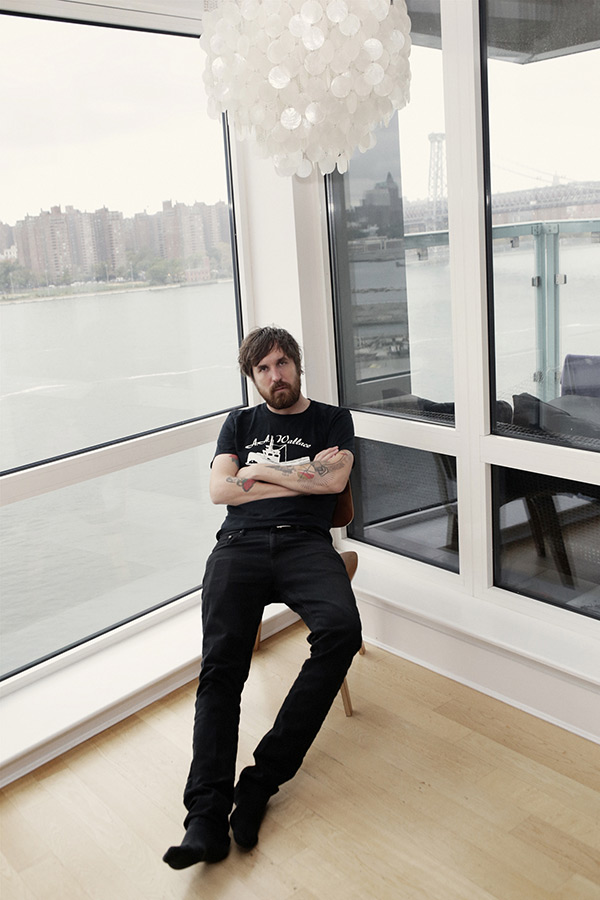Office – How long have you been living in New York?
Jeppe Jarnit-Bjergsø – Two and a half years. We live here in South Williamsburg and we work from here. We actually have an office in Greenpoint, but we never use it. It’s just easier to work from home. Wake up and start working right away.
O – What makes Brooklyn a fitting location for Tørst and Luksus?
JJB – I think Brooklyn is a fitting location for pretty much everything right now. The creativity just seems to be here, and everybody says that. Plus, we bike around, and it reminds us a little bit of a busy Copenhagen, I’d say. Then you go to Manhattan and it’s totally different, you come up from the subway and go “Holy shit, what the fuck is going on!” It’s fun, but I wouldn’t want to spend too much time there, it’s too busy, too corporate, too office. Brooklyn definitely inspires us a lot though, especially the food scene here, which is growing like crazy. The Michelin Guide came out yesterday and there were a lot of stars given in Brooklyn—actually Luksus was just awarded a star.
O – Congratulations!
JJB – Yeah, we got that yesterday. It’s just a unique place, the fact that it’s a restaurant hidden behind a beer bar, and I think the food is amazing. It was one of our goals to get a star, and we’re the first Michelin-starred restaurant in the world that only serves beer, so it’s a big deal. We’re forging the way for what we believe in.
O – A lot of the beers at Luksus are not what one might expect—if you tasted them blindfolded you might not even know they were beer.
JJB – Totally, some you would almost think were wine. That’s exactly what we want to show—beer hasn’t been recognized for what it can be in fine dining, and that’s just because by tradition, you serve wine. There’s no other reason for it, because beer’s so diverse, and a lot of beers pair better with the foods than wine does. There are different red wines, but there’s not that much difference between French and Italian red wine, it’s still red wine, still made from grapes. Whereas beer, you can get one that’s 4% alcohol that tastes like grapefruit—plus, you can put stuff in beer. Chocolate, cherry, or I made one with licorice and beet. You can do all those things.
O – And on top of that brewers can use some of the same methods that vintners do.
JJB – Yeah, like putting beer in a wine barrel. We have two new beers coming out now that both came from wine barrels so they have a lot of wine flavor to them. That’s what we want to show the world, and for Michelin to acknowledge Luksus…
O – …it’s almost recognition for beer itself.
JJB – It is! And Michelin is very conservative, very traditional media, and for them to say “Hey, you can’t get a drop of wine here but we still want to give them a Michelin star,” that’s crazy. I hope we can inspire a lot of people to do more with beer in fine dining, that’s the whole idea.
O – Wine has long been a front runner in ultra obsessive and elite circles of epicurean connoisseurship, but beer is making headway, as is coffee.
JJB – The coffee world and the beer world are parallel in many ways, and we actually work together a lot and all know each other. We even use coffee in some of the beers, I’ve worked with Coffee Collective in Denmark, and I actually made a beer recently in Texas, it was a coffee beer without coffee in it. The brewmaster at Jester King in Austin and I decided to make a beer based on the description from the label of our favorite Kenyan coffee, it’s very fruity, floral, blueberries and stuff like that. We made a brown ale so that the coffee idea would come through, and we sort of reverse-engineered it, adding blueberries and everything—it ended up tasting a lot like the coffee.
